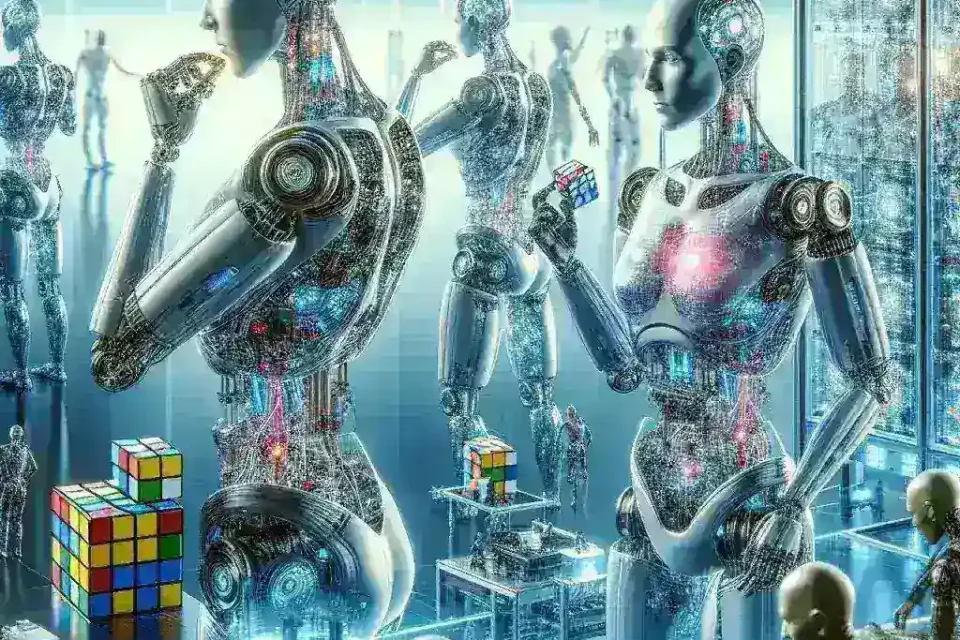NVIDIA AI Chips Now Powering Next Wave of Humanoid Robots

Introduction
The realm of robotics has seen monumental advancements in recent years, but none are as exciting as the emergence of humanoid robots powered by cutting-edge AI technology. A significant catalyst for this transformation is NVIDIA, a titan in graphics processing units (GPUs) and artificial intelligence (AI). With the launch of their state-of-the-art AI chips, NVIDIA is spearheading a new era of humanoid robots that promise to change the landscape of automation and human-robot interaction.
Historical Context
To understand the significance of NVIDIA’s AI chips, we must delve into the evolution of robotics. The journey began in the mid-20th century with the development of basic automated machines. However, it wasn’t until the 1980s and 1990s that robotics began to take shape as a field of study, thanks to advances in sensors, control systems, and computing power.
The early 2000s witnessed the birth of industrial robots, which automated repetitive tasks in manufacturing, improving efficiency and safety. As technology advanced, researchers began exploring the potential of humanoid robots—machines that could mimic human behavior and interactions. This quest for creating robots that can seamlessly integrate into human environments led to significant investments in AI and machine learning.
NVIDIA’s Pioneering Role
NVIDIA has long been at the forefront of AI technology, famously powering advancements in deep learning and neural networks. Their GPUs are designed to handle vast amounts of data, making them ideal for training complex AI models. With the introduction of specialized AI chips like the NVIDIA Jetson and NVIDIA Orin, the company is now providing the necessary computational resources for humanoid robots to perform intricate tasks.
The Technology Behind NVIDIA AI Chips
The NVIDIA AI chips are designed to process vast amounts of information in real-time, a requirement for humanoid robots that interact with dynamic environments. These chips leverage parallel processing, enabling them to perform multiple calculations simultaneously, which is crucial for tasks such as vision processing, speech recognition, and decision-making.
Moreover, NVIDIA’s software platforms, such as NVIDIA Isaac, provide developers with tools to build and optimize AI algorithms specifically for robotics. This married hardware-software approach allows for efficient training and deployment of robotic systems, ensuring they can learn and adapt to new tasks.
The Next Wave of Humanoid Robots
The latest generation of humanoid robots powered by NVIDIA AI chips is designed to enhance human-robot collaboration across various sectors. Here are a few exciting examples:
- Service Robots: Robots equipped with NVIDIA technology are beginning to assist in hospitality and customer service. They can recognize faces, understand speech, and even respond to emotional cues, providing personalized interactions.
- Healthcare Robots: In hospitals, humanoid robots powered by NVIDIA chips are aiding with patient care, monitoring, and even performing surgeries with precision previously thought impossible.
- Educational Robots: Schools are integrating humanoid robots as teaching assistants. These robots use NVIDIA’s AI to engage students through interactive learning experiences.
Benefits of NVIDIA-Powered Humanoid Robots
The integration of NVIDIA AI chips into humanoid robots offers a wide array of benefits:
- Enhanced Performance: The computational power of NVIDIA AI chips allows for real-time processing, resulting in faster and more efficient robotic responses.
- Improved Learning: Through deep learning capabilities, these robots can learn from their environments and improve their functions over time.
- Scalability: Developers can easily scale their AI solutions to meet the demands of various applications, making humanoid robots more versatile.
Challenges Ahead
Despite the promising future, there are challenges that come with the deployment of humanoid robots powered by NVIDIA AI chips:
- Ethical Concerns: The rise of humanoid robots raises ethical questions about privacy, job displacement, and the extent to which robots should operate autonomously.
- Technical Limitations: While technology is advancing, there are still limitations in robot dexterity, emotional intelligence, and contextual understanding.
- Integration into Society: The acceptance of humanoid robots in everyday life relies heavily on public perception and trust.
Future Predictions
Looking ahead, the future of humanoid robots powered by NVIDIA AI chips appears promising. As technology continues to evolve, we can expect:
- Greater Autonomy: With further advancements in AI, humanoid robots will achieve higher levels of independence, enabling them to make complex decisions without human intervention.
- Wider Adoption: Industries from healthcare to manufacturing will increasingly adopt humanoid robots, streamlining operations and enhancing productivity.
- Personal Robotics: We may soon see humanoid robots entering our homes, assisting with daily tasks, and serving as companions.
Conclusion
NVIDIA’s cutting-edge AI chips are undoubtedly powering the next wave of humanoid robots, setting the stage for a future where robots and humans work side by side. By enhancing the capabilities of these machines and driving innovation, NVIDIA is leading us into an era rich with potential and new opportunities. As we embrace this technological evolution, it is essential to navigate the challenges thoughtfully, ensuring that the integration of humanoid robots into society benefits all.
